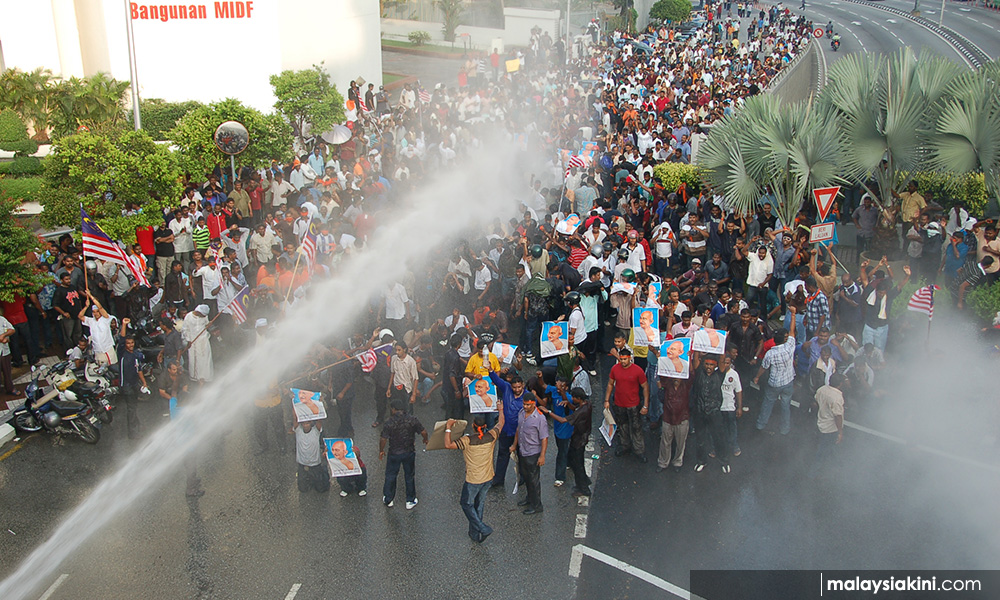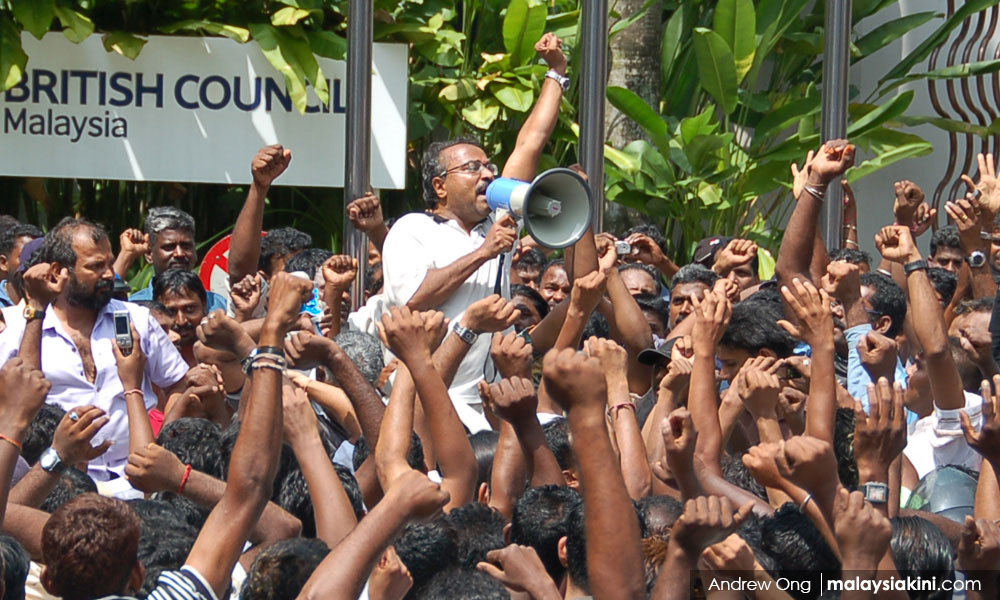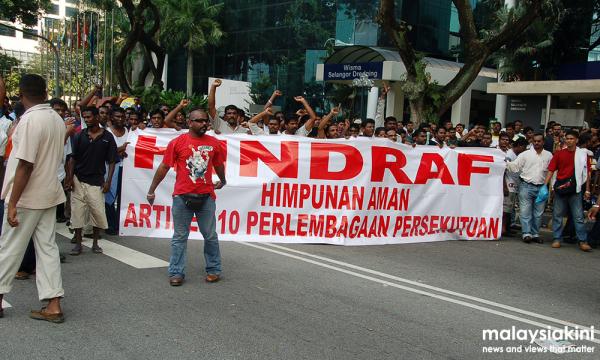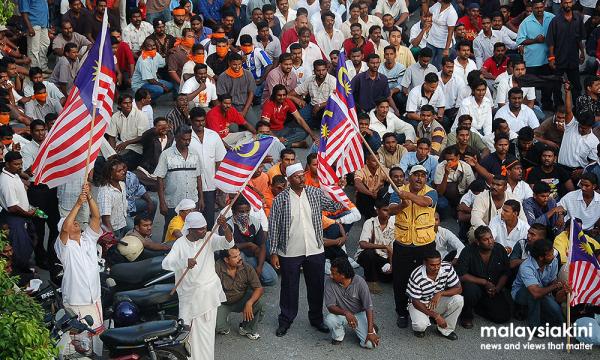COMMENT | It wasn’t regarded as a significant political movement initially.
But the widening support it received for its campaign against the demolition of temples across the country thrust the Hindu Rights Action Force (Hindraf) into the limelight.
Issues such as statelessness of Malaysian Indians, displacement of plantation workers and forceful conversions helped the movement gain traction as well.
And then Hindraf, led by human rights lawyer P Uthayakumar, went on to create history by holding a mammoth rally of fifty thousand ethnic Indians who took to the streets demanding their rights.
The protest was a collective outrage of the Indian community
and forced the Umno-led coalition government to sit up and take note of the aspirations and grievances of the Indians.

It also shifted the power balance and worked magic for the federal opposition in the 2008 general election.
For the first time in the country’s history, the opposition was able to deny Barisan Nasional its two-thirds majority in Parliament.
This was ten years ago. And it’s unfortunate that a grassroots movement, which started off with a bang, has now dwindled to a tiny spark.
Following Hindraf’s successful show of strength, the government, to remain relevant to the Indians, pumped more money into Tamil schools, temples and established the Socio-Economic Development of the Indian Community (Sedic) for economic development.
These initiatives fitted into Hindraf’s aim of improving the socio-economic position of Malaysian Indians and protecting their cultural practices.
But the biggest beneficiaries were the middle-class Indians, who already had access to government largess through the Malaysian Indian Congress (MIC).
The working class, whom Hindraf had vowed to protect and empower, were left in a limbo.
If I remember correctly, Hindraf attempted to render hollow the self-styled image of MIC as the custodian of the Indian community.
While Hindraf offered itself as an alternative, its blueprint failed to uplift the 1.5 million Indians who occupy the Bottom 40 (B40) economic rung, in its rhetoric for mainstream political support.

Hindraf’s mission would have had a better longevity if it didn’t play the race card.
The movement could have composed its manifesto within the framework of a class struggle in which the plight of marginalised Indians is championed together with all other poor communities in Malaysia, irrespective of race and religion.
When five Hindraf leaders were detained following the November 2007 rally under the now-defunct Internal Security Act (ISA), which allows for detention without trial, the split amongst them triggered Hindraf’s downfall.
While this shook the fragile foundation of the movement, the public spat between brothers Uthayakumar and P Waythamoorthy, fractured the movement even further.
Today we have a few leaders claiming to represent the interest of poor Indians under the same banner.
As Hindraf celebrates its tenth anniversary, we certainly need to commend the movement for awakening the Indian community’s outrage.
But in order to stay relevant, the movement should heal the internal divisions and look into making significant changes to its political, economic and social narratives to include every poor Malaysian as well.
CHARLES SANTIAGO is DAP Member of Parliament for Klang.
The views expressed here are those of the author/contributor and do not necessarily represent the views of Malaysiakini.



